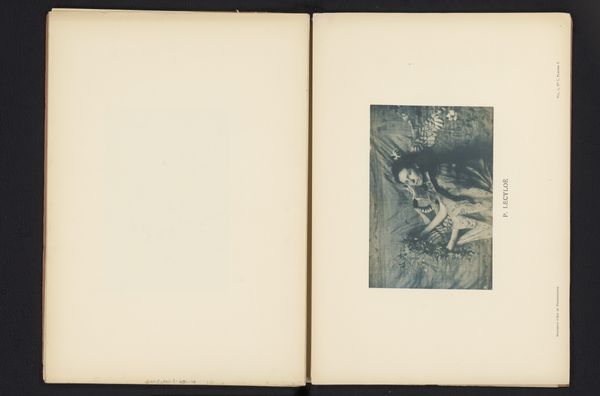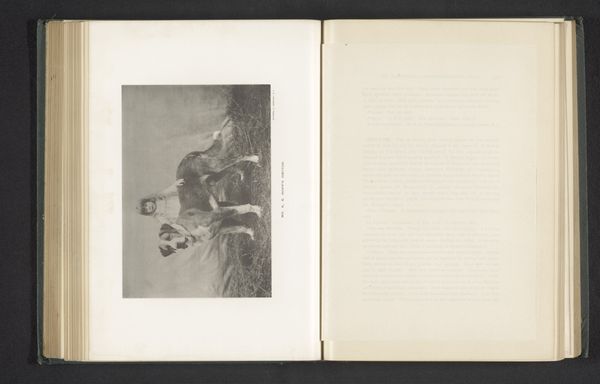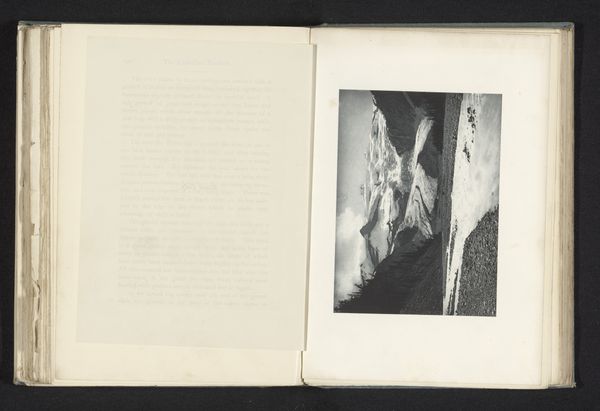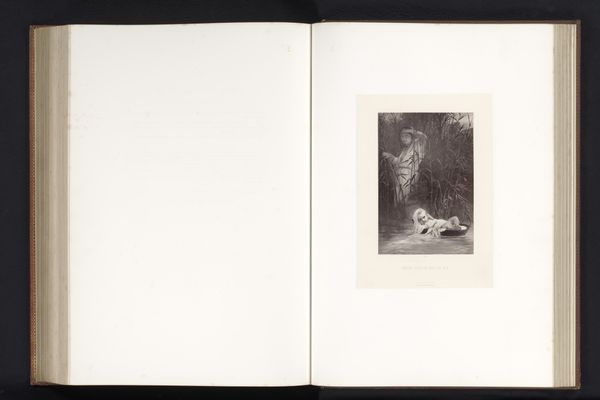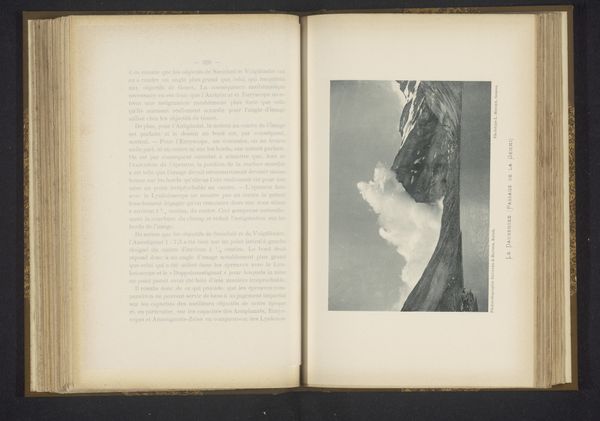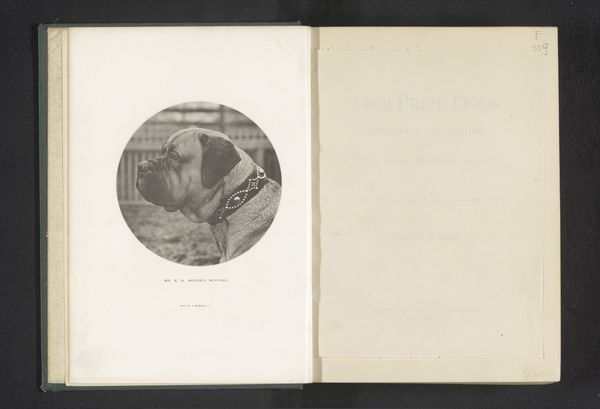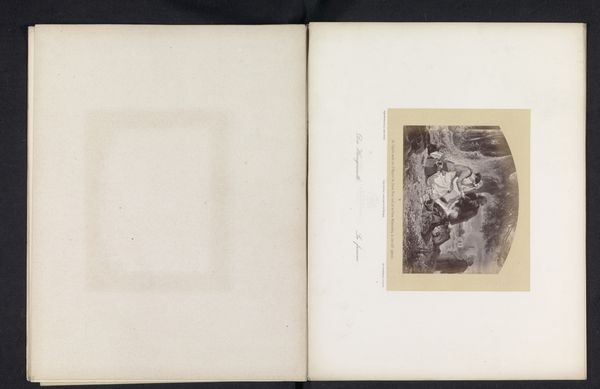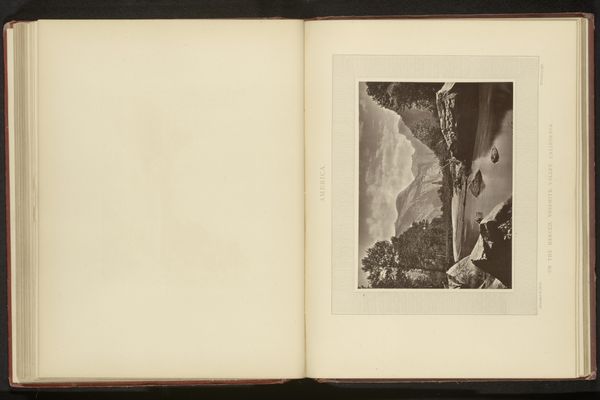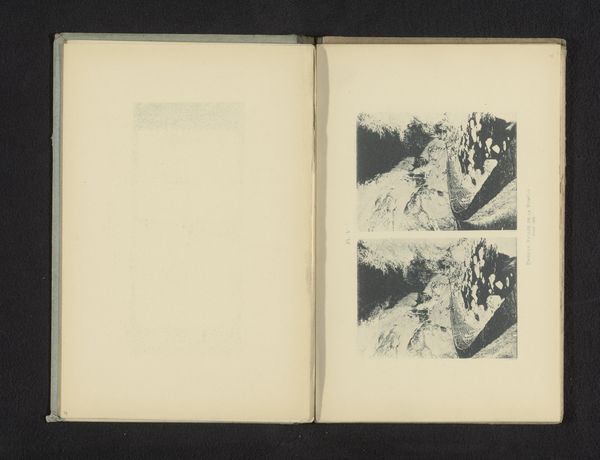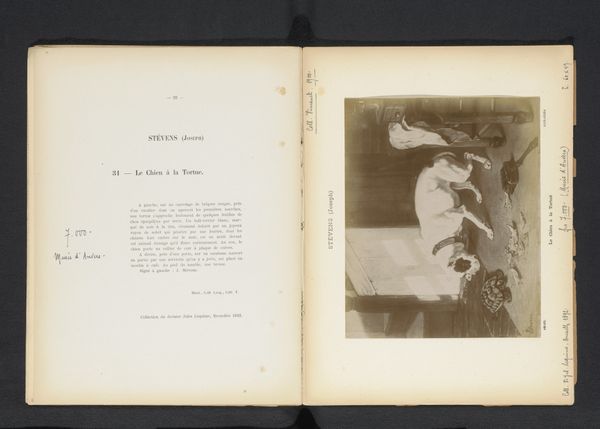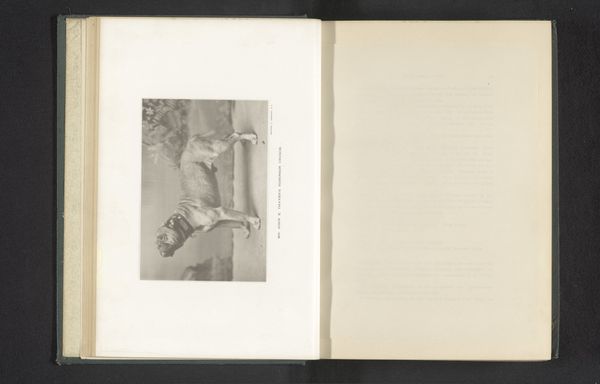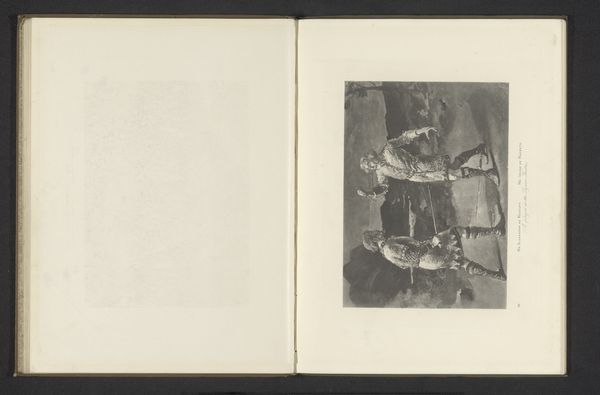
Fotoreproductie van een prent naar een schilderij met een hond en een fazant door A. Cooper before 1874
0:00
0:00
print, photography
#
aged paper
#
homemade paper
#
paperlike
# print
#
dog
#
hand drawn type
#
landscape
#
photography
#
hand-drawn typeface
#
thick font
#
genre-painting
#
handwritten font
#
thin font
#
historical font
#
small font
Dimensions: height 94 mm, width 117 mm
Copyright: Rijks Museum: Open Domain
Curator: Well, if that doesn’t look like it stepped right out of a Victorian hunting scene! I find it fascinating that this is actually a photo reproduction of an engraving based on a painting by A. Cooper of, you guessed it, a dog and a pheasant, dating from before 1874. There is something rather interesting to find an artwork, photographied so many years later. Editor: You know, it really does have that feel! My first impression is a curious melancholy, though. The low contrast and muted tones make the hunter—the dog—seem less triumphant and more...resigned. Like he's just doing his job in a world gone sepia. Curator: Precisely. It reflects the Victorian obsession with both the wild and its domestication. The genre painting itself, even before it became a print and then re-photographed, speaks volumes about social hierarchies. Hunting, a gentleman's pursuit, captured in reproducible form, suddenly available to a wider audience... though likely still the upper classes. This form is telling a very intricate story. Editor: That reproduction layers things further, doesn't it? We're not even looking at Cooper's original painting, or the original print maker's attempt to capture it. We are generations away, in photographic translation. It makes you consider what’s been lost – the artist's hand, the engraver's skill. Curator: Yes! And it's crucial to remember the power dynamics inherent in how museums select what to display, how we frame narratives around art. Is it just a charming scene of a dog with his prize, or is it an artifact reflecting specific class structures? In a public institution we must explore the implications. Editor: I love that idea – that it's more than a captured bird but a capture of a whole sensibility. Looking at it again, it's like a dream from another age, carefully preserved in this photographic echo. It makes one wonder about our own blind spots, and what future generations will see when they look at the artifacts of our time. Curator: A most sobering and crucial reflection. Art history truly thrives when it prompts self-reflection about the present. Thank you.
Comments
No comments
Be the first to comment and join the conversation on the ultimate creative platform.
